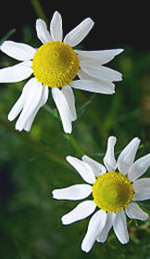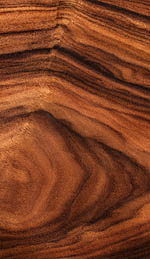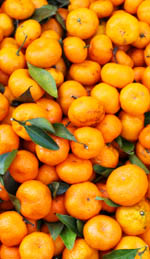 Headaches are one of the most common medical complaints; they can be caused by stress, muscle tension, hunger, eye strain from too much screen time, or deeper medical conditions. Luckily, there are many essential oils for headaches that can help reduce pain and tension. What’s more, using essential oils to treat headaches is often as easy as dabbing some oil on a cotton ball or inhaling some from the bottle. In this article, we explore some of the most popular essential oils for headaches and how to use them effectively.
Headaches are one of the most common medical complaints; they can be caused by stress, muscle tension, hunger, eye strain from too much screen time, or deeper medical conditions. Luckily, there are many essential oils for headaches that can help reduce pain and tension. What’s more, using essential oils to treat headaches is often as easy as dabbing some oil on a cotton ball or inhaling some from the bottle. In this article, we explore some of the most popular essential oils for headaches and how to use them effectively.
Please note that this article is not a substitute for trained medical advice. Headaches may be an indication of a more serious medical condition. You should consult a physician if you suffer from headaches that are severe and/or chronic. Many severe, chronic headaches such as migraines and cluster headaches require treatment by a doctor. This article is intended to be an overview of essential oils to treat headaches that are minor and infrequent.
How Essential Oils Can Reduce Headache:
Essential oils containing menthol or 1,8-cineol have cooling properties that can directly numb the pain and discomfort of a headache [1]. Many essential oils also have vasodilating properties that increase circulation [1], may reduce muscle tension, and can even treat emotional stress at the root of some headaches [3]. Essential oils with hormone-balancing properties, such as lavender and clary sage, may be especially effective at reducing headaches caused by hormonal imbalances during a woman’s menstrual cycle [3]. As you can see, as many causes as there are for headaches, there is also an essential oil to combat them!
The Essential Oils – Peppermint:
One of the most popular essential oils for headaches, peppermint contains cooling menthol that can directly numb tissues while also increasing nourishing blood flow to the painful area. People commonly use peppermint oil for tension headache and muscle ache [2]. However, peppermint oil can be stimulating and may interfere with sleep, so we recommend against using it right before bed. You can also use spearmint oil if you prefer the aroma, since it contains many of the same compounds [2].
Lavender: With its high linalyl acetate content, lavender oil is sedating and can soothe inflammation [2]. The oil also contains phytoestrogens which may help reduce headaches caused by an imbalance of female hormones. Lavender oil’s calming properties can be perfect for treating any underlying emotional stress as well. This oil can be used before bed without keeping you awake, and in fact, lavender aromatherapy is actually recommended for treating sleeplessness[2].
Roman Chamomile Oil: This lovely, apple-scented oil possesses similar properties to lavender oil due to its high ester content [2]. Roman chamomile oil is sedative, reduces tissue inflammation, and may also have direct relaxing effects on the nerves [2].

Roman chamomile oil is one of the gentlest essential oils. Its common name comes from its wide use in medicine since Roman times.
Eucalyptus Oil: This oil is especially effective for sinus headaches caused by congestion. Packed with 1,8-cineol, eucalyptus has powerful expectorant properties and direct analgesic properties similar to menthol [3]. Note that eucalyptus oil should not be used on children younger than 12 (for older children, consult a physician), because it can cause respiratory spasm, especially in larger quantities [2].
Basil Oil: A muscle relaxant similar to peppermint oil, basil oil can be used to reduce tension headaches, as well as aches and pains in the surrounding neck and head muscles [1].
Ginger Oil: This slightly spicy-smelling oil is a powerful vasodilator and circulatory stimulant. Commonly used for painful, aching joints, a little bit of ginger oil can also go a long way toward wiping away that irritating tension headache [2]. Ginger oil is best used sparingly in a blend with another oil such as lavender. Anecdotal evidence suggests ginger oil may be somewhat effective against more severe chronic headaches such as migraines [3].

Ginger oil is an invigorating circulatory stimulant that works on circulatory problems and muscle pain as well as headaches.
How to Use Essential Oils for Headaches:
As with any essential oil treatment, dilution is the rule. Always dilute a few drops of your chosen essential oil (or blend) in 1 fluid ounce of a gentle carrier like jojoba oil. The general ratio is 10-12 drops of essential oil (6-8 drops if using peppermint, spearmint, or eucalyptus, as these oils are stronger) in 1 fluid ounce of carrier oil. Place your blend in an amber or blue glass bottle with a stopper. 1-4 drops of this blend may be massaged into the painful area—back of the neck, temples, forehead, and so on. You can also dilute a few drops of essential oil in water in a spray bottle to create a room spray, or use the inhalation method: place a few drops of undiluted oil into a diffuser or cotton ball and inhale the vapors. When using this method, use only one drop of essential oil at first until you know how your body reacts to it [2].
Cautions:
Always use any essential oil for headache sparingly and in dilution (unless using the diffusion method above). Using more of an oil will not necessarily be more effective, and may cause a reaction or sensitivity to the oil. We always recommend consulting a physician when considering treating children with essential oils, as they may have sensitivities to certain oils. For instance, oils high in menthol or 1,8-cineol, such as peppermint or eucalyptus, can cause breathing difficulties in children. Furthermore, while this is rare, a few essential oils can actually cause headaches! Ylang ylang oil in particular is a headache trigger for some people, especially when used in excess [2].
Other Headache Treatments:
Certain foods rich in phytochemicals are thought to reduce the frequency of headaches: particularly flax seed (which is high in healthy omega-3 essential fatty acids), and buckwheat, which contains the phytochemical rutin [1]. The pith (white part) of citrus fruit is also a source of rutin. Conversely, people suffering chronic headaches and migraines should consider keeping a food diary to identify foods that may be headache triggers. Common “trigger foods” include caffeinated or alcoholic beverages, chocolate, red wine, foods high in tannins, MSG, red or processed meat, and aged, fermented or pickled foods [1]. Eliminating these foods and then slowly adding in one at a time can be one way to identify foods that may be headache triggers [1].
Even more severe forms of headaches such as migraine and cluster headache may respond to do-it-yourself remedies. At the onset of a migraine, massaging the occipital nerve at the base of the skull can sometimes reduce the severity of an attack, or even prevent it in some cases [3]. This treatment’s effectiveness may be increased by warming the hands about 15 degrees (by soaking them in warm water); researchers think this increase in temperature may treat vascular headaches by regulating circulation [3].
Finally, some people find relief from chronic, severe headache such as cluster headache by use of capsaicin cream [3]. Derived from the compound that makes chili peppers hot, when rubbed into the spot where headaches occur 4-5 times per day for about 4 weeks, capsaicin cream is thought to reduce and even prevent severe headaches by depleting nerve endings of substance P, the neurotransmitter that sends pain impulses to the brain [3]. Capsaicin cream works best as a headache preventative because of the more extended treatment required.
Nature has created many plants with compounds that can aid us in our quest to rid ourselves of headaches and other sources of chronic pain. With a little research and dedication, it is possible to naturally treat headaches and live a more comfortable life!
REFERENCES
1. Calabro, Sara. “Home Remedies for Headache and Migraine”. Everyday Health. Accessed January 27th, 2015. http://www.everydayhealth.com/headache-migraine-pictures/8-home-remedies-for-headaches-and-migraines.aspx.
2. “Aromatherapy for Headaches”. Aromaweb. Accessed January 27th, 2015. http://www.aromaweb.com/articles/aromatherapy-essential-oils-for-headaches.asp.
3. Keville, Kathy. “How to Get Rid of a Headache With Aromatherapy”. HowStuffWorks. Accessed January 27th, 2015. http://health.howstuffworks.com/wellness/natural-medicine/aromatherapy/how-to-get-rid-of-a-headache-with-aromatherapy.htm.


 The practice of ingesting essential oils is one of the more contentious issues in aromatherapy. Ask a dozen different aromatherapists and you’re likely to get a dozen different answers as to the efficacy and safety of taking essential oils internally.
The practice of ingesting essential oils is one of the more contentious issues in aromatherapy. Ask a dozen different aromatherapists and you’re likely to get a dozen different answers as to the efficacy and safety of taking essential oils internally.

 Peoples living in the Amazon jungle have been using rosewood for centuries. In particular, the Brazilians say they combine rosewood oil with other oils and use the blend to treat various skin conditions. On its own, the oil is used to treat impotence. The French call it ‘bois de rose‘ and say that it helps relieve stress, sexual issues, and respiratory problems. The global demand for
Peoples living in the Amazon jungle have been using rosewood for centuries. In particular, the Brazilians say they combine rosewood oil with other oils and use the blend to treat various skin conditions. On its own, the oil is used to treat impotence. The French call it ‘bois de rose‘ and say that it helps relieve stress, sexual issues, and respiratory problems. The global demand for 
